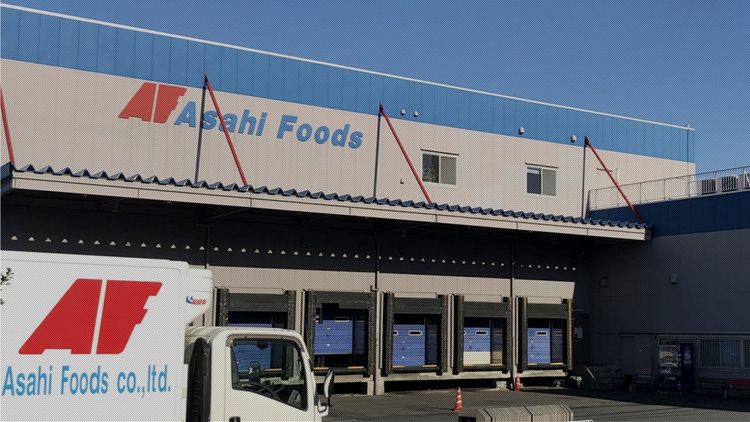Since its establishment in 1901, Nakamuraya has created a variety of "foods" that had never existed in Japan before, such as cream buns and pure Indian-style curry. Among them, the Chinese steamed bun, which was introduced in 1927 under the name "Tenka Ippin Shina Manju," is a big hit that is still enjoyed by men and women of all ages nearly 100 years after its introduction.
Nakamuraya's Chinese steamed buns are sold mainly at convenience stores, supermarkets, and department stores, but demand fluctuates greatly depending on the season and temperature. Therefore, Nakamuraya has introduced "Weather News for business," a weather information service exclusively for corporate use, to forecast demand for Chinese buns such as steamed buns and bean-jam buns, manage inventory, and improve delivery efficiency. We interviewed Inoue - san and Sato - san of Nakamuraya's Logistics Department, who are involved in the supply-demand adjustment and delivery management of Chinese buns, about how they utilize weather information.
Shipment numbers change dramatically with changes in temperature, making accurate demand forecasting a challenge.
Nakamuraya produces and sells Chinese buns throughout the year. The company's best selling season is usually from November to January, when temperatures are cooler, but a warm winter causes shipments to decline, making accurate demand forecasting difficult. The company produces its steamed buns at three factories in the Kanto region and distributes them throughout Japan. During peak season, we sometimes produce up to 1 million pieces per day. However, the number of shipments changes sensitively and significantly with temperature fluctuations, so we have always needed to accurately forecast demand based on weather conditions," said Inoue - san.

Nakamuraya also makes improvements every year to meet the changing needs and tastes of its customers over time. Therefore, there was also a challenge in making final inventory adjustments for old products.
Sales volume declines from spring to summer, when the weather gets warmer, but we need to control inventory from August to September because we have an annual renewal in fall. Temperature is an important piece of information for inventory control, but until now we had been comparing multiple weather sites, so the information was inconsistent," said Sato - san.

Developed "Chinese Manju Index" independently using long-term temperature data and reduced inventory to less than half of the previous year's level.
Weathernews for business" for businesses allows users to check a variety of weather information, such as daily maximum expected temperatures, temperature differences, and long-term forecasts up to six months ahead, for each factory or sales area. In addition to timely next-day and weekly forecasts, the use of weather data such as year-on-year and normal year-on-year comparisons has made it easier to make forecasts, and has facilitated "demand forecasting" and "inventory management," both of which had been challenges. The company is now able to smoothly conduct "demand forecasting" and "inventory management," both of which had been challenges. We have meetings three times a week to check the situation and make production adjustments. At that time, we look at the temperature map of the sales area on "Weather News for Business" and share the nationwide demand trend in real time. Since we can grasp the situation visually and instantly, we can quickly share a common understanding even in short meetings.

In addition, Nakamuraya uses weather data to create its own "Chinese Manju Index" to predict the number of daily shipments in order to control the number of old products in stock prior to the annual fall renewal. By using the "Chuka-Man Index," Nakamuraya was able to reduce the number of inventories at the end of sales in 2023 to less than half of the previous year's level.
We also consulted with Weathernews to adjust inventory from early spring, and used temperature forecast data up to one month in advance. We created our own 'Chinese bun index' by analyzing the temperature and the number of shipments, and it has come in handy in narrowing down our inventory to eliminate losses," said Sato - san.
Delivery plans that take into account the impact of traffic due to inclement weather to ensure that products are delivered to their destinations.
In addition, Nakamuraya Logistics Department has a mission to ensure the delivery of Chinese steamed buns to the destination. Therefore, "Weathernews for business" is also used for delivery operations. Quick decisions can now be made based on weather information, and the speed of measures against stormy weather has been improved. Cooperation between related departments has also become smoother, and irregular delivery plans can now be formulated in less time.
For example, when a typhoon is coming, we hedge the risk by increasing the number of delivery trucks. For example, if there is a typhoon coming, we increase the number of delivery trucks to hedge the risk.
With "Weathernews for business," you can register your factories and distribution centers on a map and check the degree of impact to each area and the time period of impact. Together with forecasts of traffic impact on expressways and other roads, we can now grasp the risks to our delivery operations and formulate more accurate delivery plans than ever before.
After the introduction of the system, we can make decisions with a sense of speed because everyone is looking at the same data and can make unified decisions. Even when typhoons hit Okinawa, we were able to identify delivery risks in advance, which made it possible to smoothly secure the necessary shipping services and increase or decrease inventory.

Aiming to achieve reliable delivery with an eye to weather collaboration with logistics companies and to enhance inventory management.
In order to ensure the safe and reliable delivery of products, he says that in the future he would like to promote the coordination of weather information not only within the company but also with partner companies.
Currently, we send weather alerts to our logistics partners. In the future, if our partner companies can see the weather information on Weathernews for business, they will be able to respond more quickly based on the shared data," says Inoue - san.
In addition, by accumulating knowledge on temperature and shipment volume, the company hopes to improve the accuracy of long-term demand forecasting and further reduce the cost of inventory management and delivery operations. Nakamuraya will continue to take on new challenges to deliver reliable taste and service based on the philosophy of "pursuing true value" sought by customers and "sharing the joy" of customers, related companies, and employees through the realization of such value.































